I believe in Global Warming (and other conversion stories)
Man-made global warming predicts the past with amazing accuracy. Its record at predicting the future is less impressive. Yesterday’s weather always seems to confirm global warming but it’s never predictive: when there’s a big hurricane, it was global warming charging up the weather, and the next year is likely to be worse. When the next year ends up with an extremely weak hurricane season, it’s global warming causing the ocean to calm down, and we’re going to have mild winters. When the next winter is extremely cold and snowy, it’s global warming again. When it’s warm it’s proof of global warming; when it’s dry it’s proof of global warming, when it’s wet it’s proof of global warming, and when it’s cold it’s either proof of global warming or weather isn’t climate.
In the last several years, we’ve seen that warm weather in Texas is the result of global warming; cold weather in England is the result of global warming; a powerful hurricane is the result of global warming, and a weak hurricane year is also the result of global warming.
It never seems to matter how the predictions come out, the result is always proof of man-made global warming.
One of the recent examples of that is a statistic about the number of record highs in the last several months. You can always search the statistics of the past for confirmation bias: there are millions of statistics, and you can throw out the ones that don’t help you. What matters is how well the theory you base on those statistics can make predictions. That’s what science is.
I saw those stats on Facebook, and commented that “the real test will be what predictions are made from this data.”
My Facebook friend’s response was not a scientific prediction made from a testable theory. It was an article titled A Message From a Republican Meteorologist on Climate Change. Paul Douglas’s article starts out like it’s addressing an AA meeting, and it talks completely about generalities, isolated statistics, and blanket predictions. It predicts everything so that it can never be wrong1, but predicts nothing measurable, so that it can never be disproved. It disparages proponents of applying science to the theory as enemies of the Truth.
I grew up Catholic, and I recognize Paul’s story: it’s a conversion story. Paul Douglas was driving out of Damascus, Minnesota and Mother Nature hit him on the head and said “be my steward”. This “Republican Meteorologist” didn’t look at the predictions of anthropogenic (human-caused) global warming as a theory, see that they predicted a mild winter in 2008/2009 and that the prediction held up. He couldn’t; it was the coldest in a decade. The next winter’s predictions were even further off the mark. He didn’t say that he looked at the predictions of increased hurricane activity in 2007 and that the prediction held up; 2007 was one of the mildest hurricane years in the past hundred years. He didn’t say that he looked up the predictions of snow loss in the Himalayas, or of any of the other disproven predictions of anthropogenic global warming.
If human-caused global warming were a scientific theory, the people who made those predictions would have moved on to something else; their theories were disproven.
The test for any scientific theory is, how can it be proven false? A theory that can’t be proven false no matter what happens is religion, not science. For example, these twelve months are not proof: they weren’t predicted. But suppose sometime in the next ten years there were 12 months with similarly-record-making lows. Would that be a disproof of global warming? What if temperatures had stagnated for the past ten years? Would that be a disproof?
Science needs theories that make predictions about both what happens when they’re right and how to falsify the theory if they’re wrong. Scientists do not try to prove their theories. They try to disprove them. A scientist with a theory will tell you how to disprove their theory. That is, they will either show that their theory makes a prediction which, if it doesn’t come true disproves their theory; or they will show that the theory predicts something not happening, and if that something happens it disproves their theory.
- What is the theory?
- How does it predict some future event happening or not happening?2
- How will that prediction be measured?
Then, and only then, do you get to “perform the experiment”. You don’t get to make predictions in hindsight; you don’t get to choose the measurements afterwards. Not if you want it to be science.
As John Tierney wrote on January 1, 2008:
But there’s bound to be some weird weather somewhere, and we will react like the sailors in the Book of Jonah. When a storm hit their ship, they didn’t ascribe it to a seasonal weather pattern. They quickly identified the cause (Jonah’s sinfulness) and agreed to an appropriate policy response (throw Jonah overboard).
You can always sift through statistics to find something out of the ordinary. Statistically speaking, there will always be something out of the ordinary: 50% of everything is above average. Parts of the United States are hot this summer; other parts were colder, but I wouldn’t be surprised if San Diego’s turns out to be colder than normal, too. We normally get at least a few hot days in July, and we haven’t yet. Now, there’s still time in August for hot days; if we do get hot days in August, I can expect that (a) there will be cold days in other parts of the world, and (b) those cold days will be ignored but our hot days will be proof of man-made global warming.
My Facebook friend wasn’t doing anything out of the ordinary proselytizing for global warming as if it were a religion rather than a science. Man-made global warming proponents tend to act more as a cult than as a religion, with instructions on how to talk with your relatives about the cause. It’s frustrating for those of us with a scientific background. Six years ago, a friend of mine was talking about how soon global warming was going to cause catastrophes. Within six years, the bay he lived on was going to be several feet higher; by 2016 it was going to be 12 feet higher. I have no idea where he heard that, but it doesn’t matter, because the failure of that prediction hasn’t changed his faith in global warming. He’s just turned to different prophets who are more careful to talk in terms of centuries rather than predictions that can be verified in a single lifetime.
Man-made global warming is an impressive theory; to become a science, its proponents need to start making measurable predictions that can prove their theory false. Instead, they hide their predictions and change their data. If man-made global warming were science, you wouldn’t see its practitioners seeing divergent temperatures between rural and urban measuring stations, and always adjusting upward to the higher temperature urban sites.
If man-made global warming were science, you wouldn’t see its practitioners predicting fifty million climate refugees by 2010 and then hiding the decline. Even natural evolution, where some things get bigger and some get smaller is proof of global warming: initially, global warming predicted smaller birds, but when birds started getting bigger, the researchers think that the trend is due to climate change.
The theory predicted one thing; they found the opposite. They decide that both results support their theory. That isn’t science. Science is making measurable predictions: predictions that specify both what will happen and how it will be measured.
Until global warming theory works in more than just hindsight, it’s not something we can spend trillions of dollars on, because there’s no way to plan for the future using a theory that can’t make predictions. If you think man-caused global warming is science, ask yourself “how can it be proven false?” When a religious leader predicts the end of the world on May 21, you know that when the end of the world fails to come, they’ll just re-predict the end of the world for October 21. Science doesn’t work that way. Science needs to be falsifiable, or it isn’t science.
And as Saul journeyed, he came near Damascus: and suddenly there shined round about him a light from heaven: and he fell to the earth, and heard a voice saying unto him, Saul, Saul, why persecutest thou me?
And he said, Who art thou, Light? And the Light said, I am the Earth whom thou persecutest: do not thou be such a prick.
And he trembling and astonished said, Gaia, what wilt thou have me to do? And Gaia said unto him, Arise, and go into the Huffington Post, and it shall be told thee what thou must do.
And Saul arose from the earth; and when his eyes were opened, he saw no man: but they led him by the hand, and brought him into the Huffington Post.
And he was three days without sight, and neither did eat nor drink, nor browse the Web for Porn.
And there was a certain disciple at the Huffington Post, named Ullman; and to him called Gaia in a vision. And he said, Behold, I am here, Gaia.
And Gaia said unto him, Arise, and go into the street which is called the Internet, and inquire in the house of Ariana for one called Saul, the Republican: for, behold, he prayeth, and hath seen in a vision a man named Ullman coming in, and giving him a homeopathic remedy, that he might receive his sight.
Gaia said unto him, Go thy way: for he is a chosen vessel unto me, to bear my name before the Republicans, and conservatives, and the confused voters: for the voters are confused at the poor track record of our alarums.
And Ullman went his way, and entered into the Huffington Post; and diluting his medicine to make it powerful gave it to Saul to drink, and said, Brother Saul, the Light, even Gaia, that appeared unto thee in the way as thou camest, hath sent me, that thou mightest receive thy sight, and be filled with the Holy Green, and shall be diluted to the nth degree that thou mayst be most powerful.
And immediately there fell from his eyes as it had been scales: and he received sight forthwith, and arose, and was baptized in the name of global weirding, and went forth to make alarums in Gaia’s name.
- July 6, 2016: Climate priests cry wolf one more time?
-

There’s a wolf in the water! Run! (photo by Magnus Kjaergaard, CC-BY-3.0)
It’s getting a bit tedious comparing the occasional global warming article in Science News to the real science articles they run, but the contrast is often so wide it’s hard not to discuss them. In the April 30, 2016 issue there is an amazing juxtaposition between three articles: a nearly-literally fuzzy article about cute white bunny rabbits, a serious article about a potential discovery of a new white dwarf in astronomy, and what looks for all the world like an article from some apocalyptic prophet about how we will not see any sea level rise (unless we do, or unless we see a sea level drop) until about two and a half decades from now when it will SUDDENLY SHOOT UP AND DROWN US ALL UNLESS WE REPENT IMMEDIATELY!!!
I’m going to ignore the white fuzzies article. It’s just “aw, nature is mean & evolution is stupid”, although if you’re interested it does have a cute photo of a snowshoe hare. It doesn’t have bad science in it; it doesn’t have any science at all. Below it, on the left page, is Christopher Crockett’s Odd white dwarf offers peek at core. It’s about the discovery of what is potentially a smaller white dwarf than one would expect to find, with a much different atmosphere. And after describing the potential benefits to finding a low-mass white dwarf, the article ends with some serious caveats:
Dufour says the idea is plausible, but he’s skeptical. “It could work,” he says, “but I doubt it would leave a low-mass white dwarf.”
In 2007, Dufour and colleagues reported a similar strange sighting: several white dwarfs whose atmospheres were loaded with carbon instead of hydrogen and helium. Those also appeared to be missing mass, he says, though the problem was found to lie not with the stars but with the mass estimates. The white dwarfs are heavier than initially thought, and Dufour now suspects that each one arose from a collision between two white dwarfs.
It’s too early to draw strong conclusions from a single oxygen-laden white dwarf. “There are lots of open questions before we can say that this changes our view of white dwarf evolution,” Dufour says.
- February 10, 2016: Can Californians drink a train?
-
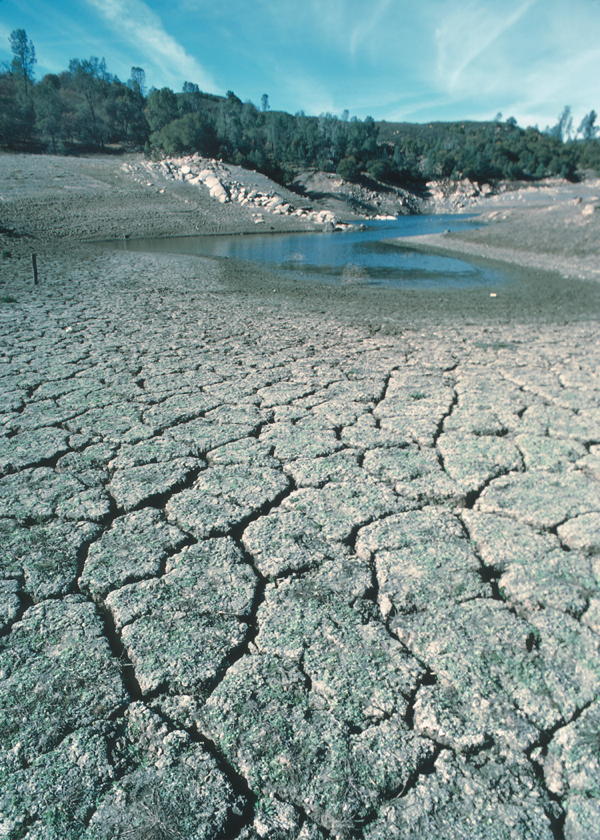
“This lake near San Luis Obispo, California barely contains any water following a several year drought.” (Photo by Tim McCabe, USDA Natural Resources Conservation Service.)
California’s been in drought since 2012. Thanks to El Niño, it has finally ended, four years later—actually, fifty months later—in 2016.
During those four years, California chose to spend a lot of money combatting future droughts. They did this by building some extraordinarily expensive, and getting more expensive all the time, high-speed trains. They did this because they say they believe the drought was caused by man-made global warming, and that building high-speed trains will alleviate the global warming caused by people driving cars.
Now, ignoring for the moment that the real reason the left loves trains is that they are the epitome of central control that keep on paying graft dividends forever, let’s take them at their word that building trains is, for them, a climate change measure, and that their intention on building them is to alleviate climate change and keep droughts from happening in the future. This is a perfect example of the trade-offs that get ignored whenever politicians invoke the term “climate change”.
Nature does not care what their intentions were. Their theory is either right, or wrong.
If their theory is wrong, if this drought and future droughts are the same as past droughts in California—then the hundred billion spent on combatting climate change was not money that accidentally made the world better, as the meme went. It was money spent poorly, that demonstrably makes the world—or at least California—far worse.
- January 27, 2016: Cargo cult climate science
-
Thomas Sumner, in the December 26 Science News end-of-year round-up of the “Top 256 Science News stories of 2015”, writes in the round-up of story 5:
A supposed pause in global warming that has been fodder for climate change doubters never really existed, researchers reported in 2015.
The fuss began when studies showed that decades of warming appeared to have level off in 1998. From that year through 2012, Earth’s yearly average surface temperature increased at one-third to on-half the average rate from 1951 through 2012. This warming “hiatus,” as it came to be known, had climate scientists scratching their heads and climate doubters gloating.
In June, scientists at the National Oceanic and Atmospheric Administration announced that they had finally found the cause of the hiatus, and it wasn’t shifting winds or pint-size volcanic eruptions as some scientists proposed… The slowdown never existed. The biggest culprit, the scientists found, concerned measurements of ocean surface temperatures.
That’s all horribly not science. Evidence that contradicts theory is not “fodder for doubters”, it’s fodder for the theorists, if the theorists are scientists. Scientists are joyful when they find something that doesn’t fit their theories, because altering theories to fit the evidence is how scientific fields advance. Altering evidence to fit the theory isn’t science. But according to Sumner, instead of looking for where their theory has gone wrong, climate researchers been jumping from demon to demon trying to find the demonic interference that keeps nature from proving them correct. It can’t be that there’s something wrong with their theory because they don’t acknowledge the possibility of being wrong.
But in science, if you don’t acknowledge the possibility of being wrong, you’re also disavowing the ability to be right. Being wrong is how you advance.
Imagine if the tobacco companies’ theory that smoking was good for you (seriously, go back to their literature in the fifties) had been treated this way. Rather than take a second look at the theory after the clear measurements, they instead pointed to bad winds and then volcanic eruptions and then hidden cancer in the waters and then after all of that turned out not to help them, just decided, well, you’ve been measuring it all wrong. We’re going to stick with our theory, because our theory is true and any attempts to prove it false are just “fodder for tobacco health doubters”.
- October 6, 2015: Another victim of climate change: science reporting
-
The latest Science News has another example of how climate change is killing science reporting. I don’t mean to pick on Science News. It’s the science magazine I subscribe to and so they’re the one I’m familiar with. As far as I can tell, they’re the best general science magazine available; that’s why I chose to subscribe to them.
In the Notebook section of their September 19, 2015 issue, they report on a Weather, Climate and Society article that says U.S. agriculture could save $2.2 billion “Estimated annual savings to U.S. agriculture by 2100 from aggressive carbon emissions.”
… economist Brent Boehlert of MIT and colleagues estimate that large-scale climate action would save farmers about $980 million annually by 2050. More modest cuts would net savings of around $390 million annually.
The notebook entry is missing one very important piece of information: a comparison to give that number meaning. There is an entire branch of science devoted to giving measurements meaning; I learned that in a previous issue, which reported that scientists are attempting to create a more precise means for measuring mass.
Now, at most of the levels that matter for a general science magazine, mass will always be more precise than economics. But the notebook entry just above the climate change entry is on virus infection, an area just as bound by statistics as economics. That article reports on research into how vomiting helps noroviruses spread.
… Depending on pump pressure and the virus concentration in the throw-up, as few as 36 and as many as over 13,000 virus particles were released by the mechanical spewing.
Those numbers are just as meaningless as the millions and billions in the climate change article. How many viruses does it take to cause an infection? Tens? Hundreds? Thousands? Millions? Without that information, the “36 and as many as over 13,000” numbers are worthless. To provide context, author Sarah Schwartz adds:
Just 20 norovirus particles can cause infection, so vomiting can probably spread norovirus to more unfortunate victims.
- August 20, 2015: What if we’re wrong about global warming?
-

“Last year, 40 percent of corn grown in the US went to fuel instead of food. If all the land used to grow biofuels for the EU in 2008 had instead been used to grow food, it could have fed 127 million people for an entire year.”
Progressives are often charged with one-dimensional analysis: not taking into account the indirect costs of their policies, but only the direct costs compared to direct and indirect benefits. That is, doubling the good or halving the bad.
I recently saw a cartoon get sent around about a “Climate Summit” in which some angry guy says, “What if it’s a big hoax and we create a better world for nothing?”, talking about global warming. It listed:
- Energy independence
- Preserve rainforests
- Sustainability
- Green jobs
- Livable cities
- Renewables
- Clean water, air
- Healthy children
- etc. etc.
In this meme, they’re literally using zero-dimensional analysis. They’re counting as benefits things that have nothing to do with fighting man-made global warming, and ignoring not just the indirect costs, but the direct costs of fighting it. It isn’t just that corn in gasoline has the indirect cost of clogging up engines. They’re not even counting that corn in gasoline cannot be used as food, and claiming healthier children even though the reality is starving children.
In this particular meme they’re also conflating two completely different things. Fighting global warming has little to do with energy independence. We are achieving energy independence with oil; activists for a static climate oppose that, because it’s oil.
Fighting global warming has literally nothing to do with making cleaner air and making people healthier. Carbon dioxide is one of the good gasses. If we want a bigger rainforest, we want more carbon dioxide to feed it. Cleaner air is a grand goal, but cleaner air is mostly about other chemicals in the air: carbon monoxide, sulfur, and so on. Cleaner air has also mostly been achieved. And its been achieved by balancing the costs—in jobs, lost opportunities, and higher prices—to achieve it.
- July 10, 2015: Global warming vs. oiled dolphins
-

Global warming scientist punishes dissenters.
It seems as though every year since I started paying attention, we discover that even though the current year’s numbers don’t show a warming trend—and haven’t since 1998—the current year really was hotter because someone has discovered that temperatures from previous years need to be adjusted colder. The pause, hiatus, or whatever you want to call—but whatever you call it has to imply that it is temporary—does not really exist.
Reading the latest Science News, I discover that that seventeen-year warming plateau has been acknowledged—so that it can be explained away by readjusting the numbers all through this and the previous century.
I have only been receiving Science News for about a month, and it is normally a great magazine. Part of what makes it great is that it presents a lot of information concisely. Global warming ‘hiatus’ just an artifact, study finds is one page, and on the facing page is a paleoanthropology summary, Fossils suggest another hominid species lived near Lucy.
A partial upper jaw and two partial lower jaws, one recovered in two pieces, belonged to Australopithecus deyiremeda, says a team led by Yohannes Haile-Selassie, a paleoanthropologist at the Cleveland Museum of Natural History. These finds support the view that two or more hominid species coexisted in East Africa before the dawn of the Homo genus, the researchers report in the May 28 Nature.
These two discoveries have a lot in common. Both potentially change the conversation in their respective fields. Both are about a lot of interpretation of raw numbers. It is hard to interpret global climate based on the incomplete and inconsistent measurements of the past century, and it is hard to identify separate species based on a handful of incomplete and broken bones.
Most importantly, both are about variation. How do you measure it in a theoretically and experimentally useful way? There is a minor controversy in paleoanthropology today, whether they have been making up new species for what is observed as normal variation in humans and other species today.
So what’s different? One article presents a contrary view, one does not.
- August 19, 2012: The 329th consecutive month of hot temperature adjustments
-
You can always sift through statistics to find something out of the ordinary.
This is especially true when you control the statistics. For example,
July was the fourth-warmest such month on record globally, and the 329th consecutive month with a global-average surface temperature above the 20th-century average, according to an analysis released Wednesday by the National Climatic Data Center (NCDC).
However,
Actually, 864th, but matching the numbers sounds better. It’s all a matter of what statistics you choose to look at. But, as I said in July, you don’t get to make predictions in hindsight; you don’t get to choose the measurements afterwards. The most important part of this chart isn’t that the numbers are being adjusted upward, it’s that they’re being adjusted differently every year.
At first it was global warming, but when the globe didn’t cooperate it became climate change. And when the theory still didn’t allow for predictions, it changed to global weirding. The word itself half-invokes the supernatural, and is specifically chosen to avoid a testable theory.
↑Or, how does it predict the outcome of some experiment? But while there are a few experiments, such as the CERN cloud experiment, for the most part we can’t do experiments on the weather, we can only make predictions.
↑
predictions
- Dearth Day Disaster: 50 Million “Climate Refugees” Missing: Ace at Ace of Spades HQ
- “50 million predicted. Zero found. That’s about par for what passes as climate science these days. Another hallmark: ‘hiding the decline’, in this case by deleting the inconvenient truth of their asshattery from the Internet. I’m sure they’ll correct the inconvenient typo by telling us we're all doomed. DOOMED. Just in 2020 now.”
- Fifteen Foolish Forecasts: How did environmentalists get it so wrong on Earth Day 1970?
- “For example, the predictions made at the first Earth Day in 1970 were wrong. No, wrong isn’t a strong enough word. They were spectacularly wrong. Let’s cover all the tenses and say they were wrong, they are wrong, and then make our own prediction and say they will be wrong in the future.”
- The incredible story of bigger shrinking birds, courtesy of global climate change: Anthony Watts at Watts Up With That?
- “Although it is encouraging that species are changing in response to climate change,” said Seavy, “it is also troubling that environmental stressors are pushing and pulling on species in diverse ways… What will happen to our ecosystems as some species get larger and others get smaller?”
- Mild U.S. Hurricane Season Defied Predictions: Willie Drye
- “The hurricanes that some feared would pummel the U.S. in 2006 never materialized because of a combination of unusual weather conditions, scientists say.”
religion
- How to Discuss Climate Change With Your Uncle During the Holidays: Russell McLendon
- “Don’t treat your uncle like he’s dumb”, even if he is a “climate-change denier”.
- In 2008, a 100 Percent Chance of Alarm: John Tierney
- “When Hurricane Katrina flooded New Orleans in 2005, it was supposed to be a harbinger of the stormier world predicted by some climate modelers. When the next two hurricane seasons were fairly calm—by some measures, last season in the Northern Hemisphere was the calmest in three decades—the availability entrepreneurs changed the subject. Droughts in California and Australia became the new harbingers of climate change (never mind that a warmer planet is projected to have more, not less, precipitation over all).” (Memeorandum thread)
- A Message From a Republican Meteorologist on Climate Change: Paul Douglas
- “You can’t point to any one weather extreme and say ‘that’s climate change’. But a warmer, wetter atmosphere loads the dice, increasing the potential for historic spikes in temperature and more frequent and bizarre weather extremes… A warmer atmosphere holds more water vapor, more fuel for floods, while increased evaporation pushes other regions into drought… ‘Global Weirding’ has arrived.”
science
- CERN Experiment Confirms Cosmic Rays Influence Cloud Seeds: Anthony Watts at Watts Up With That?
- “It appears that a non-visible light irradiance effect on Earth’s cloud seeds has been confirmed. The way it is posited to work is that the effect of cosmic rays (modulated by the sun’s magnetic variations which either allow more or deflect more cosmic rays) creates cloud condensation nuclei in the Earth’s atmosphere. With more condensation nuclei, more clouds form and vice-versa. Clouds have significant effects on TSI [Total Solar Irradiance] at the surface.” (Memeorandum thread)
- Hockey stick observed in NOAA ice core data: J. Storrs Hall at Watts Up With That?
- “Yes, Virginia, there was a Medieval Warm Period, in central Greenland at any rate. But we knew that—that’s when the Vikings were naming it Greenland, after all. And the following Little Ice Age is what killed them off, and caused widespread crop failures (and the consequent burning of witches) across Europe. But was the MWP itself unusual?” (Memeorandum thread)
- New study shows half of the global warming in the USA is artificial: Anthony Watts at Watts Up With That?
-
 “Not only does the NOAA USCHNv2 adjustment process fail to adjust poorly sited 772 stations downward to match the well sited stations, but actually adjusts the well sited 773 stations upwards to match the poorly sited stations.” (Memeorandum thread)
“Not only does the NOAA USCHNv2 adjustment process fail to adjust poorly sited 772 stations downward to match the well sited stations, but actually adjusts the well sited 773 stations upwards to match the poorly sited stations.” (Memeorandum thread)
- Why the U.S East Coast heatwave was not unusual nor the number of record temperatures unprecedented.: Anthony Watts at Watts Up With That?
- “Again in the Pacific Northwest, it actually was colder than the 30 year mean for the fifth straight year.”
winter
- Milder and drier winter predicted
- “This winter will be milder than average and drier than last year in the UK, Met Office forecasters have predicted… After a summer that saw high rainfall and the dullest August on record in terms of sunshine, the winter months will see relatively high temperatures.”
- The UK Met Office “Winter Forecast”—fail or faux?: Anthony Watts at Watts Up With That?
- “Last night saw November minimum temperature records fall across the country. Most notably both Wales and Northern Ireland recorded the coldest November night since records began. In Wales, temperatures fell to -18.0 °C at Llysdinam, near Llandrindod Wells, Powys. Northern Ireland recorded -9.5 °C at Loch Fea.”
- Winter 2008/09
- “The UK mean temperature for the winter was 3.2 °C, which is 0.5 °C below average, making it the coldest winter since 1996/97 (also 3.2 °C). Over England and Wales it was the coldest since 1995/6 and over Scotland and Northern Ireland the coldest since 2000/1.”
More cargo cult science
- Cargo Cult Science
- “When you have put a lot of ideas together to make an elaborate theory, you want to make sure, when explaining what it fits, that those things it fits are not just the things that gave you the idea for the theory; but that the finished theory makes something else come out right, in addition.” Richard Feynman’s famous “cargo cult science”, adapted from the Caltech commencement address given in 1974. Rescued from Donald Simanek’s home page.
- Rudyard Kipling: The Humility of the Plague Doctor
- Charts and graphs are not science. You can get charts and graphs with astrology and biorhythms. Computers can model scientific superstition just as well as they can model real theories. Bloodletting is superstition even if its done in the name of a computer model.
- The scientific creed
- If science is your religion, you have chosen the hardest religion of all. If science is your religion, you don’t prove yourself right. You prove yourself wrong.
- Should the government (and the CDC) fund research into gun violence?
- Government funded research has held back progress in reducing violence and preventing suicide.
- Did government funding help keep Flint’s water unsafe?
- When researchers rely on government funding to keep their jobs, it should come as no surprise that they aren’t eager to publish findings that reflect badly on those government agencies that fund them.
- Seven more pages with the topic cargo cult science, and other related pages
More global warming
- Climate priests cry wolf one more time?
- In science, if your theory’s predictions don’t happen, you need a new theory. In religion, if your beliefs predict something that doesn’t happen, you just keep moving that prediction further into the future.
- Can Californians drink a train?
- The meme goes that even if we’re wrong about global warming, the money spent will still make the world a better place. That is only true if you can drink a high-speed train.
- Cargo cult climate science
- When your real-world evidence contradicts your theory, that isn’t a boon for deniers; that’s a boon for you, because, if you are a scientist, that is how your scientific knowledge advances. Real scientists are embarrassed when they ignore real-world evidence in favor of a mere theory.
- Republican President must keep Roosevelt’s word
- Even if a future conservative president doesn’t believe Americans of Japanese descent are disloyal, says Irwin Stelzer, he should think twice before rescinding President Roosevelt’s Executive Orders. The President’s honor—and the nation’s—is more important than politics.
- Another victim of climate change: science reporting
- The needs of religious reporting are completely different from the needs of science reporting. Treating climate change as a religion is killing science reporting. If we’re not careful, it will kill science as well.
- 14 more pages with the topic global warming, and other related pages
More science
- Cargo Cult Science
- “When you have put a lot of ideas together to make an elaborate theory, you want to make sure, when explaining what it fits, that those things it fits are not just the things that gave you the idea for the theory; but that the finished theory makes something else come out right, in addition.” Richard Feynman’s famous “cargo cult science”, adapted from the Caltech commencement address given in 1974. Rescued from Donald Simanek’s home page.
- Does government funding hold science back?
- Abundant government funding for research probably has the effect of dividing research into crazy and conventional, with little in between for innovative.
- Another victim of climate change: science reporting
- The needs of religious reporting are completely different from the needs of science reporting. Treating climate change as a religion is killing science reporting. If we’re not careful, it will kill science as well.
- Global warming vs. oiled dolphins
- Catastrophic anthropogenic global warming critics are more dangerous than oil execs who kill dolphins, and need to be buried deeper than two million year old bones. But this makes CAGW a non-science. Science requires criticism or it isn’t science. Science-oriented media outlets are doing CAGW scientists a disservice by protecting them from competing theories.

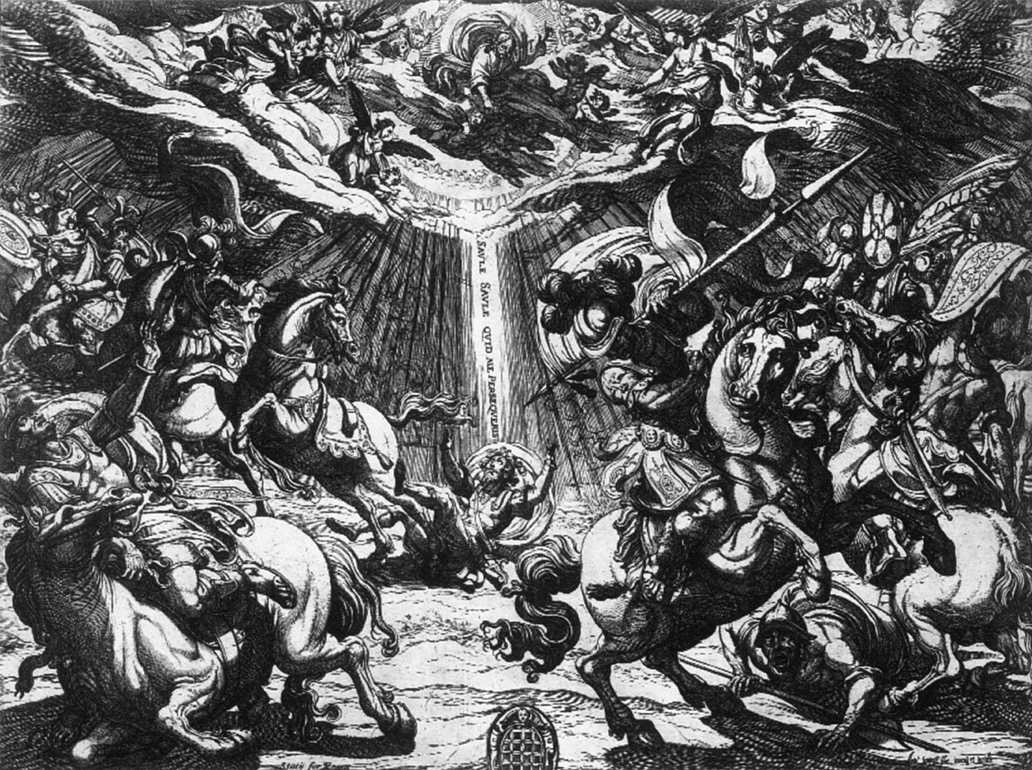
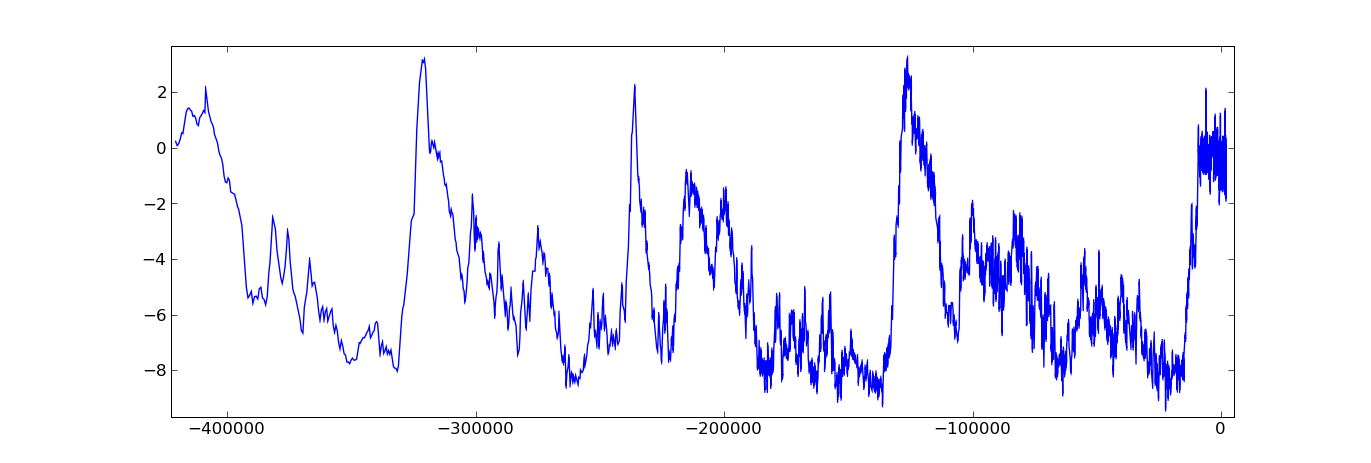
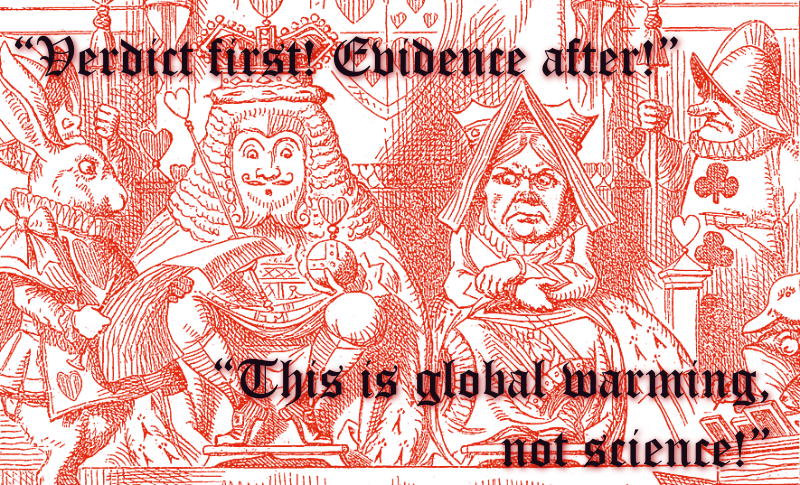
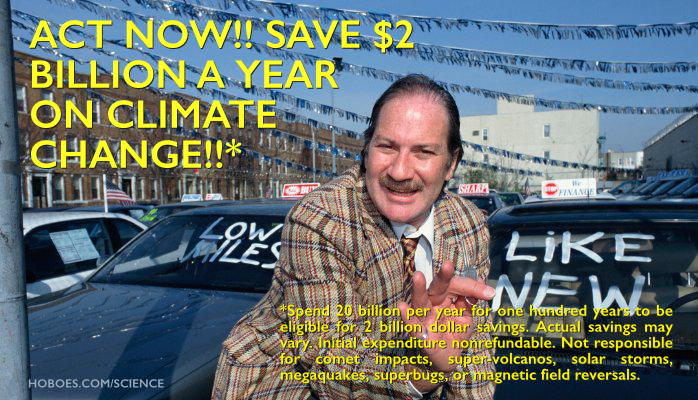
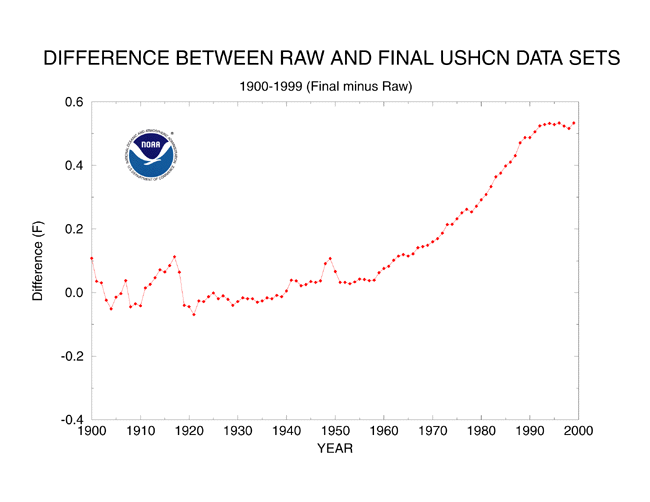
So, yeah.
1. What is the theory? That human activity is causing the surface temperature of our planet to rise.
2. What does it predict? NOT THE WEATHER. Anyone on either side who uses single weather events or even seasons to prove or disprove global warming is trying to prove or disprove statistics with a single roll of a die.
It DOES predict long-term weather trends. It does not say that there will be no places with record cold temperatures, but it does say that there will be more record highs around the world than record lows. And that's been happening for a while now, and at least in the short term (with dicey statistical significance) seems to be accelerating.
3. How will that prediction be measured? Note that the study you cite about adjusting for thermometer siting also agrees that the temperature is rising. The dispute is over how much. Measurements will continue to get more accurate over time, and that's a good thing. If this downward revision turns out to be more accurate, that's good news for everyone.
As you point out, science should always be challenging itself, and while it's easy to find blowhards on both sides of the equation to chuck stones at, there are a lot of good scientists working to understand what's going on, and to diminish their work because some dimwit said there'd be catastrophe by 2012 is doing everyone a disservice.
Other Jerry at 2:23 a.m. August 1st, 2012
15wAa
The problem is that those dimwits predicting catastrophe and hiding their failed predictions are the scientists in the United Nations and other politically-funded research bodies, setting policy and funding other dimwits. The 50-million climate refugees by 2010, for example, came from the U.N. Environmental Program, and when their prediction failed completely the prediction was scrubbed; and then re-released a few months later with 2020 as the target date.
Can you be more specific about the prediction you mention? Provide a link that describes the mechanism which will cause the expected results, the prediction, and the pre-agreed measurement? (Too often, the measurements are chosen while they are being measured, to ensure that the prediction came true.)
Jerry Stratton in San Diego at 8:27 a.m. August 1st, 2012
+g/Ql
Blowhard = policy maker has never been more apparent than in the "what to do about global warming" debate.
In my very very brief search (gotta go to work), I found this, but it isn't much use without references to the actual studies involved. Not really worth bothering with except as a reminder to me to do more digging later.
Other Jerry at 11:31 a.m. August 1st, 2012
15wAa
Jerry, Well written. My response to global warmers is "Grand Canyon" and walk away.
Michael in Germany ...mild summer at 5:54 p.m. August 1st, 2012
q9Ez+
OK, I promised a reference, and here it is. I've been sitting on it for a long time because I didn't want to throw it out there without well-reasoned commentary. Alas, the following commentary will have to do.
Anyway, there are a lot of places that cite the same study. Here's one of the calmer ones:
Record High Temperatures Far Outpace Record Lows Across the US.
Some things worth noting that the article may not make clear:
1) That bar graph is not about absolute numbers, it's about the ratio. You might look at that graph and conclude that record highs are way up, but in fact they're not. Each bar is the same length.
2) Over time, you would expect fewer record highs and record lows. After ten years of collecting data, a new extreme temperature would be common. After a thousand years, a new extreme would be unusual. With a smaller number of extreme events, the ratio will skew faster.
3) This data is based on the same temperature stations we discussed above. Remember though, the dispute about those stations is not whether things are getting warmer, but how quickly they are getting warmer.
4) Back to the ratio business. Record highs have not increased that much, but record lows have dropped off significantly lately. Unfortunately, this is consistent with greenhouse warming, as less heat is radiating back out into space at night.
5) I found it painfully funny reading the comments to these articles, in which a handful of chicken littles took the data for the last two years, drew a logarithmic graph and concluded that the earth would be a million degrees next week. Not really contributing to rational debate there, fellas.
6) Not sure if it was this article of one of its sisters who carefully explained that the data did not come from the UN. That's how much credibility that august body retains on this issue.
But even taking all the above points into consideration, there's still the conclusion: things are getting warmer. Broad statistical averages that span decades (the time frame of climate) are swinging. The argument about whether it's the result of human activity or not is silly; either way we have to deal with it.
Other Jerry at 4:33 a.m. September 3rd, 2012
15wAa
Also worth noting that on most days I drive to work. I am part of the problem.
Other Jerry at 4:47 a.m. September 3rd, 2012
15wAa
The predictions made by Meehl will require waiting until 2100 to do anything—that’s when we know if their models made an accurate prediction. And even, then, this is typical of the global warming science I’ve read elsewhere: besides putting the prediction so far into the future that it’s practically useless (I doubt that you posted that example because you want to wait until 2100 to start fixing the problem), but it already contains so many weasel words that they have already started making excuses if their prediction is wrong.
“This is our prediction based on our models. The actual results may be higher or they may be lower, and even our current model clearly doesn’t match the problem at hand.”
The argument about the cause of the issue is paramount: we are currently, especially in California, being asked to expend massive resources on fixing the problem. We are diverting our scientific resources away from identifying the problem and toward fixing a problem that’s barely more than a guess. If we end up fixing a cause that wasn’t the problem, what then?
Jerry Stratton in San Diego at 1:23 p.m. September 3rd, 2012
+g/Ql
Sorry for the slow response.
An important thing to remember when reading the above or any other article: It's not science unless the writers make an honest effort to enumerate the ways they could be wrong. It would be far more alarming if the article did not discuss sources of error.
Do not pay any attention to any so-called scientist who does not openly address sources of error, no matter how enticing their theories. This goes for nutritionists and boson-hunters, and everyone in-between.
Even in the part of the article you quote, the greatest source of uncertainty is future human behavior. That's encouraging, actually. And even here, even if you assume the greatest error margins, the conclusion is that the earth is not heating up as fast as people say, but it's still heating up.
My statement that the cause doesn't matter is simply wrong. The cause does matter. I feel dumb for not deleting it after I abandoned a tedious discussion of prevention vs. mitigation. Even the twenty seconds of review were not enough for me to realize that it was a silly thing to say.
Other Jerry On a collision course with the Andromeda Galaxy. Really. at 9:57 p.m. September 20th, 2012
5t0rl
Ah, and I have to say that the predictions most certainly do no "require" waiting until 2100 to do anything. By that logic we should not act on any prediction. "Forecast says rain tomorrow afternoon -- but we won't know until then, so let's plan out picnic anyway."
Obviously the difference is the confidence in the predictions, but we will be improving our confidence in climate predictions for decades to come. Skeptics play an invaluable role in this process, even if like Richard Muller they eventually say, "oh, I guess you guys were right all along. You're welcome."
Other Jerry On a collision course with the Andromeda Galaxy. Really. at 10:16 p.m. September 20th, 2012
5t0rl
I chose 2100 because it was the only verifiable prediction I could see in the article (assuming pre-determined measurement methods, which I’m giving them the benefit of the doubt as existing but being too boring to put in an article).
I’ve just re-read the article and it’s still the only verifiable prediction I can see. What in that article was your example of “if this does/does not happen, his theory is false”?
Jerry Stratton in San Diego at 9:54 a.m. September 26th, 2012
3eqBR